Control Your iPhone from Windows 10: Complete Guide
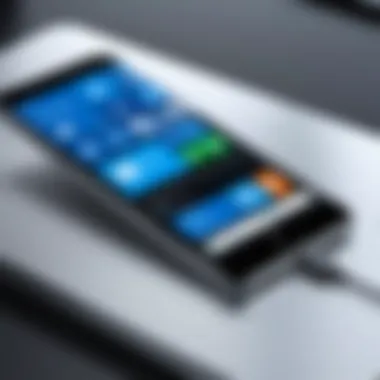
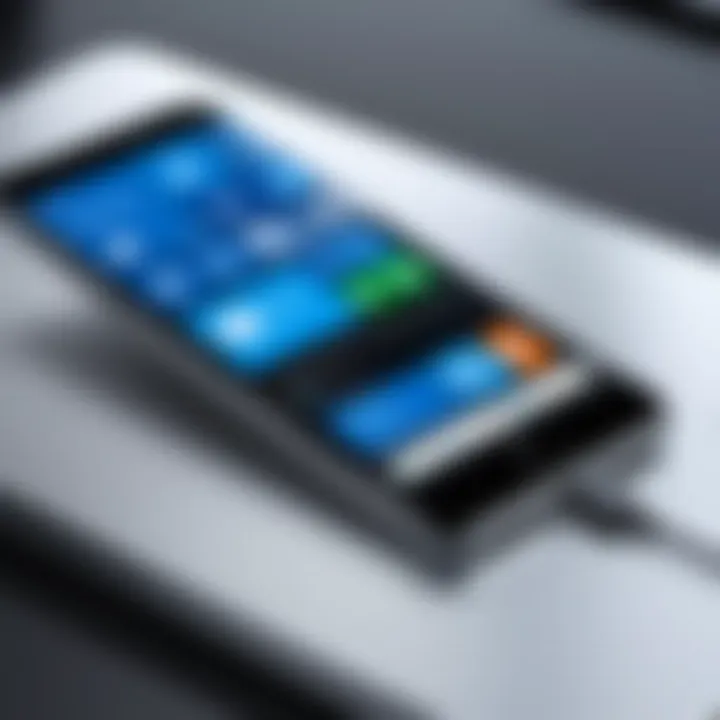
Intro
In today's world, being able to control devices remotely is increasingly essential. For many users, iPhones are indispensable tools part of their daily routines. However, managing these devices through a Windows 10 PC could be challenging. This article will explore the various methods and tools available for controlling an iPhone from a Windows 10 system. Key specifications and software solutions will be examined, highlighting the unique selling points of each method. The goal is to enhance user experience and productivity, showcasing how to optimize device management.
Overview of the Technology
Controlling an iPhone from a Windows 10 operating system involves various technologies that allow two distinct platforms to communicate seamlessly. Several software applications and services enable users to access iPhone features remotely. Each solution offers its own functionality, yet they all share a common purpose: to facilitate better management of your iPhone.
Key specifications
- Compatibility: Not all software solutions work with every iPhone model or version. It is essential to ensure compatibility with the desired iOS version.
- Connectivity: Many applications require both devices to be on the same network or may need Bluetooth support.
- Features: Some software provides comprehensive control over files, apps, and notifications, while others may focus solely on particular functionalities, like screen mirroring or file transfers.
Unique selling points
- User Interface: Many tools are designed for simplicity, making them user-friendly. Navigating through features should be straightforward even for less tech-savvy individuals.
- Functionality: Software solutions often go beyond mere control. They may enable file transfers, media management, or app notifications, enhancing the overall experience.
- Security: Effective data encryption ensures that users’ information remains safe during remote access.
Design and Build Quality
Design and build quality vary greatly depending on the software being used. Most solutions focus on functional design, prioritizing ease of use over aesthetic appeal.
Material used
While software interface does not involve materials in the traditional sense, the programming behind it is built on various frameworks providing responsiveness and speed. Also, cloud-based solutions may rely on robust servers to handle the data flow efficiently.
Ergonomics and usability
Usability is a core focus. Applications strive to ensure that users do not feel overwhelmed when interfacing between Windows and iPhone. Features like drag-and-drop file transfer, simple dashboard navigation, and clear icons make for an intuitive experience. Some software may even incorporate keyboard shortcuts for familiar Windows usability, enhancing the overall control experience.
Remember: Before choosing a software solution, analyze its features to ensure it fits your needs without unnecessary complications.
From here, the article will delve into practical methods available for controlling an iPhone, analyzing the advantages and limitations of each approach.
Preamble to Controlling iPhone from Windows
In today's interconnected world, the ability to control an iPhone from a Windows 10 PC is becoming increasingly relevant. Users often want to manage multiple devices seamlessly. The modern digital landscape demands convenience and efficiency, and combining an iPhone with a Windows 10 system allows users to optimize their workflows. This guide aims to equip readers with the necessary knowledge and tools to facilitate such remote control.
Many professionals prefer using Windows 10 for work tasks while still relying on their iPhones for communication and productivity tasks. Understanding how to control an iPhone from a Windows system can save time and increase efficiency, making it a significant topic for anyone in a similar scenario.
This method of control enhances the user experience, enabling real-time management of notifications and files without needing to switch devices constantly.
Understanding the Need for Remote Control
The need for remote control arises from the desire for multifaceted productivity. As technology advances, so does user expectation. The idea of accessing iPhone features on a separate computer provides a more streamlined approach to managing tasks. For example, responding to messages can be done directly from a Windows interface, reducing the need to switch back and forth between devices.
This capability is particularly useful for professionals who are often tied to their computers yet wish to remain connected to their personal devices. Understanding this need is crucial in recognizing the benefits of remote control.
Using iPhone applications on Windows can also enhance collaboration, allowing users to share information and resources with ease.
Overview of iPhone and Windows Interaction
The interaction between iPhone and Windows 10 is grounded in how these systems communicate. An iPhone, running on iOS, is designed for certain functionalities, while Windows 10 operates on an entirely different architecture. This difference necessitates specific software solutions to bridge the gap and enable control.
There are multiple software options available that facilitate this interaction. The primary goal is creating a seamless user experience while maintaining functionality across both devices. Applications that enable remote access function by establishing a connection via either USB or wireless networks.
However, the quality of interaction can vary based on factors such as software used, network conditions, and device compatibility. Understanding these dynamics is key to maximizing the potential of both systems.
Consequently, this overview sets a foundation for exploring the technical prerequisites required and the software applications that can achieve an optimal interaction between an iPhone and a Windows 10 PC.
Technical Prerequisites
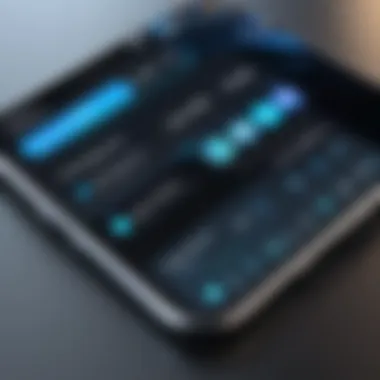

Understanding the technical prerequisites is crucial for successfully controlling an iPhone from a Windows 10 system. Knowing these elements will help users avoid common pitfalls and streamline the setup process. This section covers system requirements, device compatibility, and network connection necessities to ensure smooth operation between the two platforms.
System Requirements for Windows
Windows 10 must meet certain criteria for effective remote control functionalities. Below are the primary system requirements:
- Operating System: Windows 10 (64-bit version recommended)
- RAM: Minimum of 4 GB, though 8 GB is preferred for optimal performance
- Storage: Adequate disk space for software installations, ideally at least 1 GB available
- Processor: A modern dual-core processor or better to handle software operations smoothly
Beyond these hardware specifications, ensure that Windows 10 is up to date with the latest patches. This promotes security and compatibility with third-party applications.
Compatibility of iPhone Models with Windows
The iPhone models you use are equally as important as the Windows setup. While most recent iPhones support connection with Windows 10, older models might experience limitations. Typically, iPhones from the iPhone 5 onward generally work well with third-party applications featured in this guide. Key considerations include:
- iPhone Model: Ensure your device is a recent model. iPhone 6 and later are widely accepted.
- iOS Version: Use iOS 12 or higher for best compatibility with Windows applications.
Updating your device can become necessary if compatibility issues arise.
Network Connection Requirements
A stable network connection is essential for effective communication between your iPhone and Windows 10. Consider the following factors:
- Wi-Fi Connection: Both devices should ideally be connected to the same Wi-Fi network. This reduces latency and ensures a seamless experience.
- Bluetooth Options: Some applications may use Bluetooth for connectivity, which should be enabled on both your iPhone and Windows.
- Internet Access: Ensuring both devices have internet access can help with software updates and remote functionalities.
In summary, preparing the right technical foundation is vital. By ensuring your Windows setup, iPhone model, and network conditions meet the necessary requirements, the task of controlling your iPhone from a Windows 10 machine can be greatly simplified.
"Preparation is key to successfully merging different technologies."
Ensuring that these elements are in place can lead to a smoother experience, minimizing frustration during setup.
Software Options for Remote Control
In the quest to control an iPhone from a Windows 10 computer, the selection of software plays a critical role. Users have numerous options for applications that facilitate such connectivity. The effectiveness and features of these applications directly influence the extent to which users can manage their iPhone through their PC. Therefore, understanding the software landscape is essential. Each application offers unique benefits and potential limitations. Evaluating these aspects can lead to more informed decisions tailored to personal needs.
iTunes and Its Limitations
iTunes, created by Apple, is one of the primary tools for managing iPhone content on a Windows platform. It allows users to sync music, photos, and videos directly. However, its capabilities regarding remote control are limited. iTunes was mainly designed for media management rather than remote iPhone control. Users often find that they cannot perform extensive tasks like viewing notifications or using apps from their PC. This narrow focus can hinder productivity for someone needing to access their iPhone seamlessly. As a result, while iTunes remains a valuable tool for syncing, it is not the best choice for comprehensive remote control.
Third-Party Applications
Third-party applications present significant alternatives to iTunes for controlling an iPhone remotely. These tools typically come with enhanced functionalities, enabling users to perform various tasks. However, finding the right application might depend on specific user requirements. Several prominent applications stand out in this category:
AirServer
AirServer is a versatile screen mirroring software that enables users to cast their iPhone screens on Windows 10. This feature allows users to display their entire iPhone screen, making it a valuable option for various scenarios like presentations or gaming. The main characteristic that distinguishes AirServer is its capacity for wireless mirroring, which facilitates an experience without the hassle of cables. A significant advantage of AirServer is its support for multiple devices, enabling more than just an iPhone to connect. However, the subscription model may deter some users seeking a one-time payment option, which could limit its widespread acceptance.
ApowerMirror
ApowerMirror offers an intuitive way to control your iPhone from Windows 10. The key characteristic of ApowerMirror is its focus on screen sharing and mirroring features. This application provides users with a seamless experience in managing their iPhone's applications from a computer interface. A standout feature is the ability for users to control iOS devices from Windows fully. This means users can respond to messages or manage files right from their computers. On the downside, ApowerMirror requires both devices to be on the same Wi-Fi network, which could be an inconvenience in some situations. Additionally, some advanced features might require a premium version, leading to questions about value for casual users.
AnyDesk and TeamViewer
AnyDesk and TeamViewer serve as powerful solutions for remote control, designed to enable direct access to devices over the internet. Their primary advantage is the functionality to access all iPhone features directly from a Windows system. Users can manage apps, handle notifications, and interact with their devices almost as if they are using the iPhone itself. Both applications support cross-platform compatibility, which is a clear benefit. However, they may encounter limitations related to specific iOS restrictions. These tools often require stable internet connections, which could lead to performance issues depending on the user’s network conditions. While their ease of use and functionality is appealing, both options may come with a learning curve for inexperienced users.
Comparison of Software Solutions
When assessing software solutions for controlling an iPhone from Windows 10, several factors should be considered. Each application varies in terms of functionality, ease of use, compatibility, and cost. Users should analyze their individual needs against the features presented by each program. Comprehensive comparison helps in determining which solution will offer the best value and performance.
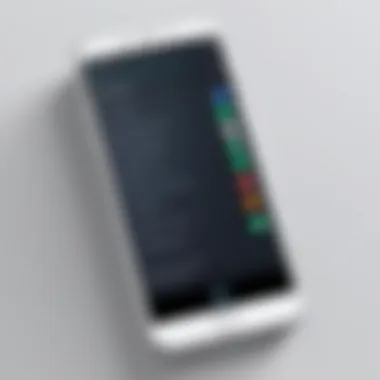
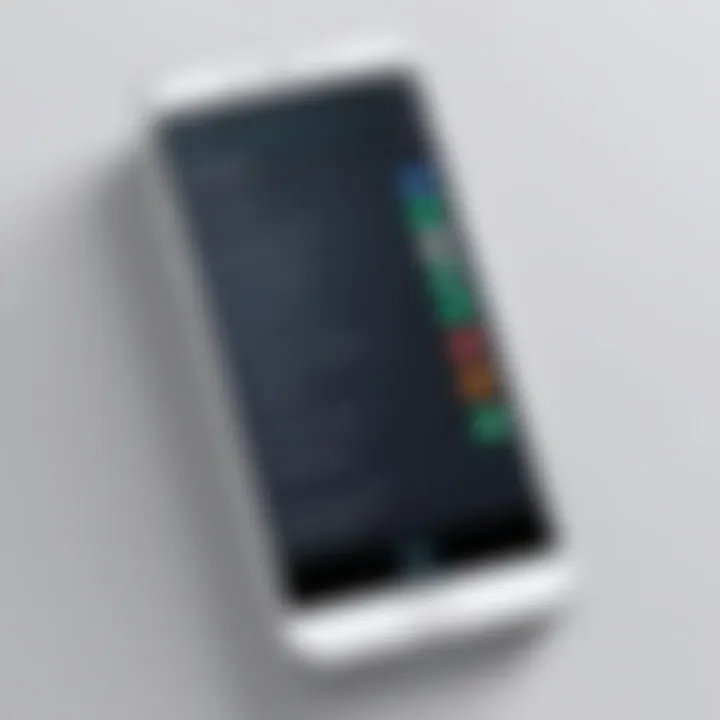
Choosing the right software is crucial to successfully manage your iPhone from Windows 10. A thoughtful evaluation of each option's strengths and weaknesses can lead to a better remote control experience.
Setting Up Remote Control
Setting up remote control between an iPhone and a Windows 10 PC is a crucial step for anyone looking to enhance their productivity. The setup process determines how easily users can access and control their iPhone features from their computer. Understanding this process helps streamline tasks, improving efficiency.
When users can control their iPhone from a Windows environment, they can manage notifications, respond to messages, and organize files without constantly switching between devices. This contributes to a smoother workflow and reduced disruption in both personal and professional settings.
Installation Procedures for Third-Party Softwares
To begin using remote control functions, installation of specific third-party software is necessary. Each software has a unique setup process, but the general idea remains similar.
- Choose the Software: Select a reliable application that supports iPhone and Windows 10 connectivity. Examples include ApowerMirror, AnyDesk, or TeamViewer. Each software provides different features.
- Download the Application: Visit the official website or a trusted source to download the chosen software. Avoid unknown or sketchy websites to prevent security risks.
- Install the Software: After downloading, run the installer. Follow the prompts which usually include accepting terms and conditions. Ensure that all necessary components are installed for optimal performance.
- Install Required Drivers: Some applications may require additional drivers to enable functionality. Make sure these are installed as prompted.
Connecting Your iPhone to Windows
After installation, the next step is connecting the iPhone to the Windows 10 PC. This step can vary based on the software used, but here are common approaches:
- USB Connection: Some applications support USB connections. Connect your iPhone to the PC using a compatible USB cable. Trust the computer on your iPhone if prompted. This step is vital for establishing a direct link.
- Wi-Fi Connection: Many modern applications allow wireless connections. Ensure both the iPhone and PC are on the same Wi-Fi network. Open the application on both devices and follow the on-screen instructions to link them.
- Bluetooth Connection: It is not typical to connect via Bluetooth for these applications, but some may allow limited control using this option. Check the software's capabilities for this.
Configuration Settings for Optimal Performance
Once the devices are connected, certain configuration settings can optimize the remote control experience:
- Adjust Resolution Settings: Depending on the software, you may adjust the visual settings to improve clarity. Sometimes higher resolutions provide better detail, while lower settings might enhance responsiveness.
- Set Up Access Permissions: For security reasons, it is essential to manage which features are accessible during remote control. Settings may allow users to restrict access to critical functions.
- Network Settings: Ensure that the connection is stable. Sometimes, changing the network configurations can improve the speed and efficiency of communication between devices.
- Update Software Regularly: Keeping the software updated ensures access to new features and security improvements.
"Setting up a reliable connection is the foundation of effective remote control. Take time to ensure each step is completed thoroughly."
Following these setup steps provides a strong base for using remote control capabilities between an iPhone and Windows 10. Understanding the processes involved allows users to leverage the full potential of their devices.
Controlling iPhone Functions from Windows
Controlling an iPhone from a Windows 10 computer offers substantial benefits. It allows users to manage their mobile devices more effectively. Engaging with an iPhone through a Windows interface can lead to enhanced productivity and streamlined workflows. Users can access critical functions and information without switching devices constantly.
The integration of iPhone functions on Windows 10 allows for greater control over notifications and media management. This is especially important for users who rely on their phones for communication and organization. Using these tools effectively can help maintain an efficient workflow, making it easier to stay on top of tasks and responsibilities.
Accessing Messages and Notifications
Accessing messages and notifications from an iPhone on Windows 10 provides significant convenience. Notifications can alert users about important messages without needing to pick up the phone. Using applications like AirServer and ApowerMirror makes this task easier. Users can view incoming texts, emails, and other alerts directly on their desktop screens.
This access enables users to respond promptly to essential communications. Moreover, managing notifications can reduce distractions. By filtering out non-critical alerts, one can focus better on more pressing matters.
To start accessing messages, install preferred software. Ensure the iPhone is connected properly. Configure the application to sync notifications effectively. Adjust settings within the application for optimal results.
Managing Files and Media
Managing files and media content is another core function. Transferring files between the iPhone and Windows 10 can help organize data better. Users can move photos, music, and documents efficiently, eliminating the need for repetitive syncing.
Using valid software options, such as iTunes or ApowerMirror, users can send files directly. This action allows for organizing media collections more systematically on the Windows interface.
Considerations for managing files include checking compatibility and ensuring that both devices are on the same network. This is critical for successful transfers. Users can also manage backup files and control photo albums directly from Windows, improving the overall media experience.
Using Apps from Windows Environment
Using applications directly from the Windows environment broadens the iPhone’s functionality. This allows users to seamlessly switch between desktop and mobile workflows. With tools like AnyDesk, applications can be operated on Windows while controlling the iPhone remotely.
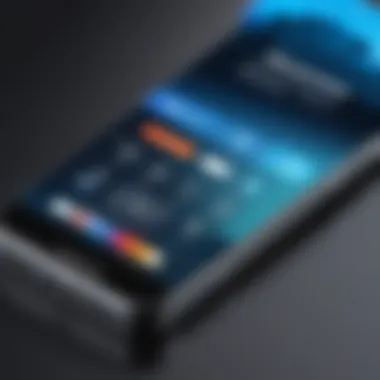
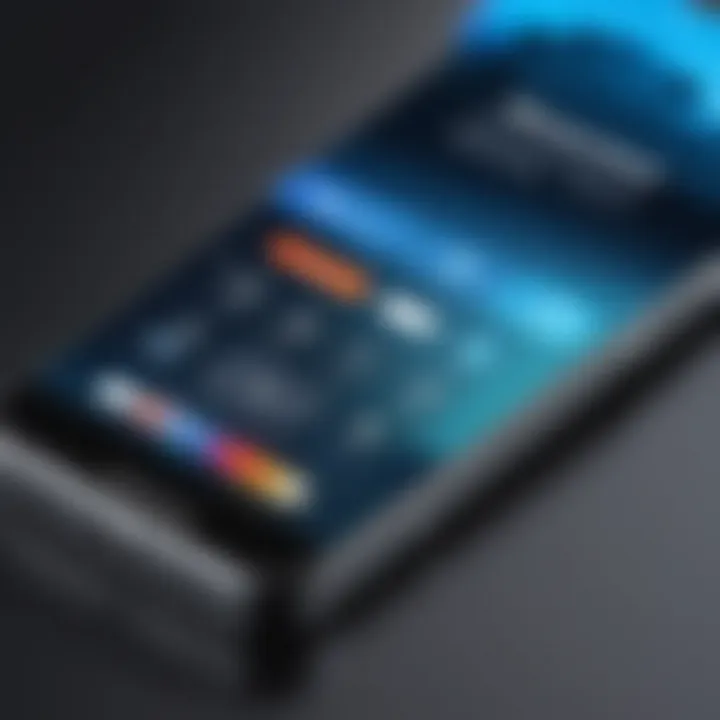
The potential to use iPhone applications on Windows enhances usability. It also supports multitasking efforts, particularly for work-related tasks. Users can manage productivity applications, such as to-do lists, email clients, and note-taking tools from their computers.
To leverage this capability, users must ensure they have the proper applications installed. Verify that these applications are compatible with both operating systems. Using these tools effectively can lead to a more streamlined experience when managing tasks and applications.
Limitations and Challenges
Understanding the limitations and challenges involved in controlling an iPhone from a Windows 10 PC is essential for users who wish to utilize this functionality effectively. Despite advancements in technology, there are several roadblocks that can impede a smooth experience. Recognizing these hurdles ensures that users can strategize accordingly and optimize their remote control setup. Moreover, it highlights the importance of security and compatibility, which can significantly affect user satisfaction and device performance.
Technical Limitations of Different Software
Various software options provide remote control capabilities, yet they come with their own technical limitations. For instance, applications like AirServer, ApowerMirror, and others might experience performance drops when used in a low-bandwidth environment. Lag is often noticeable during video streaming or when accessing high-resolution images. Moreover, not all functionalities available on the iPhone can be replicated on Windows. Some apps may restrict access to certain features, limiting the overall user experience. The installation process can also be complicated for users unfamiliar with software configuration.
Privacy and Security Concerns
Privacy remains a paramount concern when controlling an iPhone remotely. Any software that requires access to personal information must be scrutinized carefully. Data breaches can compromise sensitive information, especially when utilizing third-party applications. The need for secure connections cannot be overstated. Using a public network without adequate protection can leave devices vulnerable to hacking attempts. Users should implement strong passwords, enable two-factor authentication, and be cautious about sharing sensitive data.
Potential Compatibility Issues
Compatibility issues can pose significant challenges in establishing a reliable connection between an iPhone and a Windows 10 computer. Not all iPhone models may be supported by a specific software, leading to frustrating user experiences. Furthermore, updates in either iOS or Windows 10 can render software temporarily ineffective, causing disruption in service. It's advisable to keep abreast of updates from software providers to ensure ongoing compatibility. Additionally, hardware specifics, such as differences in Wi-Fi standards between older and newer devices, may result in fluctuating connectivity and slower performance.
"Identifying limitations and challenges is the first step towards successful remote control management."
In summary, while the potential for controlling an iPhone from a Windows 10 environment is significant, users must recognize these limitations and challenges. By understanding the technical obstacles, addressing privacy and security concerns, and preparing for compatibility issues, users can enhance their experience and maximize functionality.
Future of Remote Control Technology
Remote control technology is evolving rapidly, influenced by advancements in software and hardware. The interaction between devices continues to deepen, notably between iPhones and Windows 10 systems. This dynamic landscape presents intriguing possibilities. Understanding these developments is crucial for users who seek enhanced productivity and streamlined workflows. As more people adopt work-from-home lifestyles, effective cross-platform control tools will play a significant role in daily tasks.
Emerging Trends in Cross-Platform Control
Cross-platform control is increasingly being recognized as an essential feature in modern technology. Several trends explicate this growing importance.
- Integration of AI and Machine Learning: These technologies are improving device responsiveness and user adaptability. Systems learn user behaviors and preferences, allowing for personalized experiences.
- Cloud-Based Solutions: Many new services leverage cloud technology, allowing users to access their devices from anywhere. This flexibility contributes significantly to productivity.
- Interoperability Improvements: As companies push towards creating ecosystems, seamless interoperability among devices becomes a standard. Users can expect smoother transitions between platforms, enhancing their experience.
- Focus on Security: With greater connectivity comes the necessity of strong security measures. Future tools will likely prioritize encryption and user privacy, addressing concerns about data protection.
- Blockchain Technology: This emerging technology offers new ways to secure interactions between devices. Its decentralized nature may enhance secure transactions and exchanges of information in remote control applications.
These trends reshape our expectations for remote control over devices, offering enhanced functionality and ease of use.
Expectations for Future Updates from Apple and Microsoft
The anticipated updates from Apple and Microsoft reflect their commitment to improving user experience. Both companies have strong track records in delivering innovative solutions, which gives users reason to remain optimistic.
- Enhanced Compatibility: Future updates are expected to provide broader compatibility between iPhones and Windows 10 systems. This adjustment would minimize connectivity issues and allow for more features to be accessible.
- User-Centric Features: New functionalities will likely focus on what users find most beneficial. Features that enhance productivity and convenience will remain a priority.
- Stability and Performance: Both Apple and Microsoft are known for their emphasis on system stability. Improved performance standards in remote control applications can be anticipated.
- Regular Software Updates: Continual support and maintenance ensure that users can keep their systems up-to-date without blending user experience.
- Feedback Incorporation: Users’ feedback from previous iterations will shape future developments. This iterative approach ensures that the products evolve in response to real-world usage and needs.
The commitment to regular updates signifies the importance of user experience. Users can expect improvements that directly address their needs.
These updates have the potential to significantly change how users interact with their devices. As technology evolves, it will be essential for users to stay informed about upcoming features and improvements that enhance the remote control experience.
Epilogue
The importance of understanding how to control your iPhone from Windows 10 resonates throughout the landscape of digital interaction today. As the blurring lines between devices become more pronounced, the utility of remote control emerges as a crucial element. This article serves to delineate the ways in which one can achieve this, enhancing both productivity and accessibility.
In this exploration, we highlighted specific software solutions and procedures. Each option available presents unique features tailored to different user preferences. For example, third-party applications like AirServer and ApowerMirror offer diverse functionalities, catering to those looking for flexibility and comprehensive access.
Moreover, we discussed technical prerequisites that one must consider. Ensuring that system requirements are met is vital for a seamless experience. If the specifications are not aligned, users may face frustrating limitations when trying to operate their iPhone remotely.
Recap of Key Points
- Technical Requirements: Understanding system requirements and compatibility ensures successful remote control functionality.
- Software Options: Various programs, including iTunes and third-party applications, provide differing levels of access and features.
- Setup Procedures: Proper installation and configuration are necessary for optimal performance and ease of use.
- Limitations and Challenges: Users should be aware of potential technical issues and privacy concerns inherent in remote operations.
Final Thoughts on Remote Control Utility
The evolution of remote control technology reflects our increasingly interconnected world. Controlling an iPhone from Windows 10 not only allows for an enhanced user experience but also signifies a shift in how we manage our digital lives. By leveraging the correct tools and understanding their limitations, users can effectively integrate their devices, achieving a more streamlined workflow.
This capability represents an important development in the relationship between smartphone and PC ecosystems. As technology progresses, we can anticipate even tighter integration between platforms, ultimately enhancing usability for every user.







